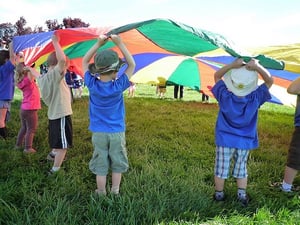As a childcare provider, field trips were both my worst nightmare and one of my favorite activities. The stress and anxiety of planning and keeping track of twelve two-year-olds in an unfamiliar place was daunting; however, seeing how much fun and how exciting it was for the kids made it all worth it in the end. That’s why, year after year, we would plan field trips to different places in our city. As much as I sometimes wanted to pull my hair out, it usually ended up being a super fun day.
Unfortunately, here at West Bend, we tend to hear the worst when it comes to field trips: Kids being left behind when the group leaves, kids getting hurt or severely sunburned, kids getting lost. Sometimes it’s hard to see the benefits of field trips through all the things that can go wrong.
Fortunately, it’s possible to plan and execute safe field trips. Here are a few tips that can go a long way toward making field trips easier and safer.
- Go to the field trip site beforehand without the kids. Unless you’re completely familiar with the site, this can be extremely helpful. Evaluate how busy it will be, identify unexpected hazards, and find the best places to park. Pick out a spot where you’ll meet with all the kids and chaperones before packing up to leave so you’ll be able to account for everyone.
- Assign children to chaperones and assign field trip buddies. While it’s tempting to allow chaperones to hang out with just their own kids, assign them a few of their child’s friends. This way you can break your larger group into smaller ones and the smaller groups can wander off in different directions. Of course, keep challenging children with the teachers. If the kids are old enough, assign each child a field trip buddy.
- Count, count, and count again. Do name-to-face counts before and after loading children onto the bus or van. If the kids are old enough, do a roll call. This is the only way to ensure no child is left behind. I would count all day long on a field trip.
- If possible, have the kids wear matching shirts/one color. One room at my old center made field trip shirts with rhinos on them every year. They were so easy to spot! If you’re going to a children’s museum or any other event with other groups of children, anything to make your kids stand out is helpful.
- Make sure the kids know the rules. Start talking about the field trip beforehand. Talk about how important it is to listen and follow directions. Kids do better if they’re prepared beforehand and know what’s expected of them.
- Bring emergency contact cards, medications, and a first aid kit. Be sure to bring any medication that might be needed on the trip, like EpiPens or inhalers. In addition, it’s important to have parent or guardian contact information for all the kids in case of an emergency.





